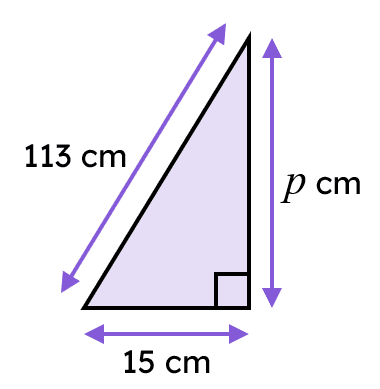Myths about teaching can hold you back


- Year 9
Length of a shorter side
I can use Pythagoras' theorem to find the length of one of the shorter sides.


- Year 9
Length of a shorter side
I can use Pythagoras' theorem to find the length of one of the shorter sides.
These resources were made for remote use during the pandemic, not classroom teaching.
Switch to our new teaching resources now - designed by teachers and leading subject experts, and tested in classrooms.
Lesson details
Key learning points
- The sum of the squares of the two shorter sides equals the square of the longest side.
- The difference between the squares of the longest and known shorter sides is the square of the remaining side.
- A calculator can perform these calculations efficiently.
- Rounding gives a less accurate answer so there might be times you wish to leave your answer with an operator.
Keywords
Right-angled triangle - A right-angled triangle has exactly one 90° interior angle.
Hypotenuse - A hypotenuse is the side of the right-angled triangle which is opposite the right-angle.
Pythagoras’ theorem - Pythagoras’ theorem shows that the sum of the squares of the two shorter sides of a right-angled triangle is equal to the square of its longest side (the hypotenuse).
Common misconception
The method for finding the length of a shorter side of a right-angled triangle using Pythagoras' theorem is exactly the same as when finding the hypotenuse.
Whilst the initial setup of "the sum of the squares of the two shorter sides equals the square of the hypotenuse" will be the same, finding the length of a shorter side will require an extra step of rearranging terms in the equation.
To help you plan your year 9 maths lesson on: Length of a shorter side, download all teaching resources for free and adapt to suit your pupils' needs...
To help you plan your year 9 maths lesson on: Length of a shorter side, download all teaching resources for free and adapt to suit your pupils' needs.
The starter quiz will activate and check your pupils' prior knowledge, with versions available both with and without answers in PDF format.
We use learning cycles to break down learning into key concepts or ideas linked to the learning outcome. Each learning cycle features explanations with checks for understanding and practice tasks with feedback. All of this is found in our slide decks, ready for you to download and edit. The practice tasks are also available as printable worksheets and some lessons have additional materials with extra material you might need for teaching the lesson.
The assessment exit quiz will test your pupils' understanding of the key learning points.
Our video is a tool for planning, showing how other teachers might teach the lesson, offering helpful tips, modelled explanations and inspiration for your own delivery in the classroom. Plus, you can set it as homework or revision for pupils and keep their learning on track by sharing an online pupil version of this lesson.
Explore more key stage 3 maths lessons from the Geometrical properties: similarity and Pythagoras' theorem unit, dive into the full secondary maths curriculum, or learn more about lesson planning.

Equipment
Licence
Prior knowledge starter quiz
6 Questions
Q1.The triangle formed from these three squares is right-angled. Find the area of the square labelled $$h$$ units².
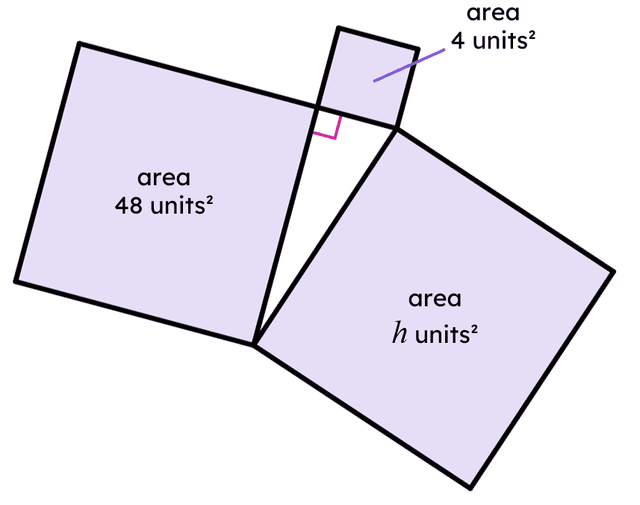
Q2.The triangle formed from these three squares is right-angled. The area of the square labelled $$p$$ units² is units².
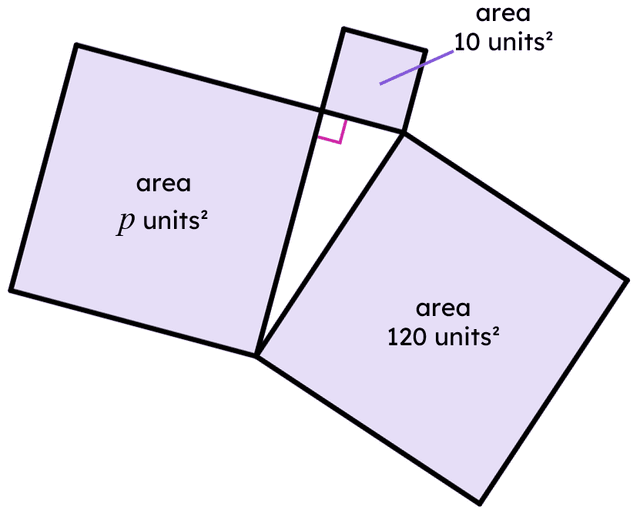
Q3.The area, $$w$$, of the largest square in this diagram, is cm².
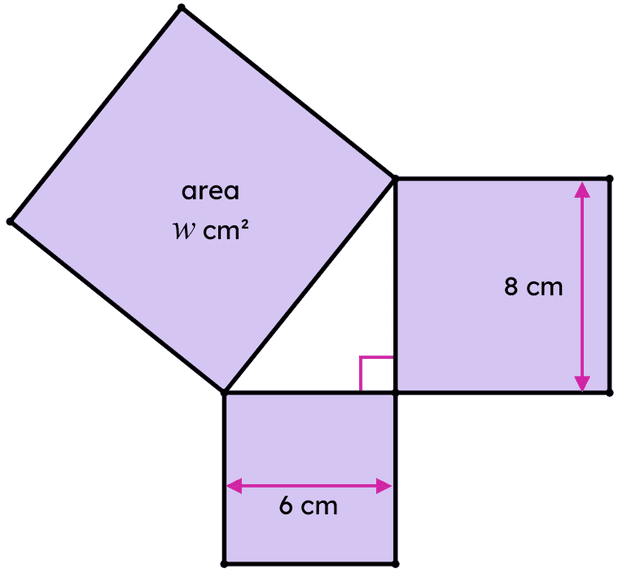
Q4.Find the length of the hypotenuse of this triangle.

Q5.The length of the hypotenuse for this triangle is units.
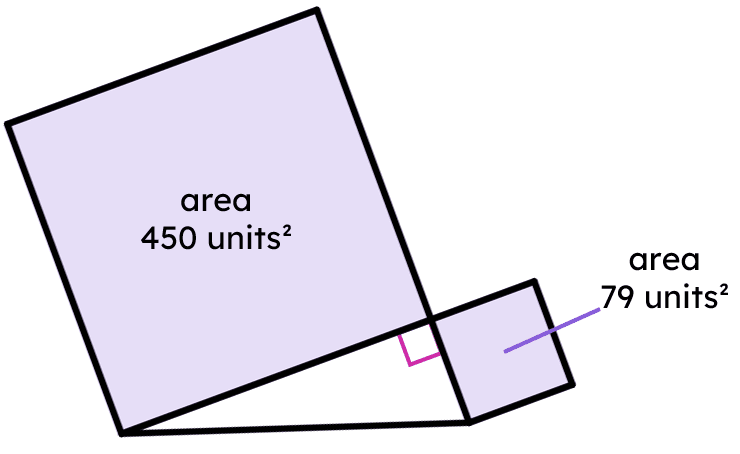
Q6.The length of the hypotenuse of this triangle is cm.
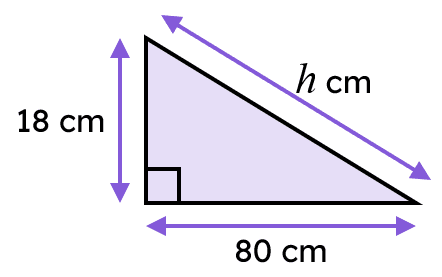
Assessment exit quiz
6 Questions
Q1.Find the length of the shorter side of this right-angled triangle, labelled $$b$$.
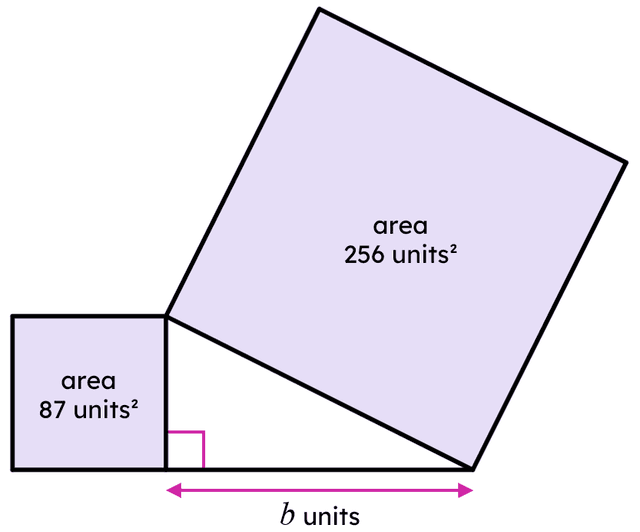
Q2.The length of the shorter side of this right-angled triangle, labelled $$c$$ is cm.
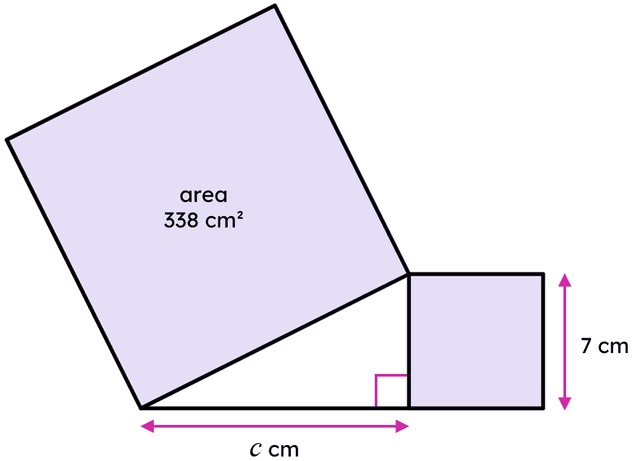
Q3.The length of the shorter side of this right-angled triangle, labelled $$d$$, is cm, rounded to 2 decimal places.
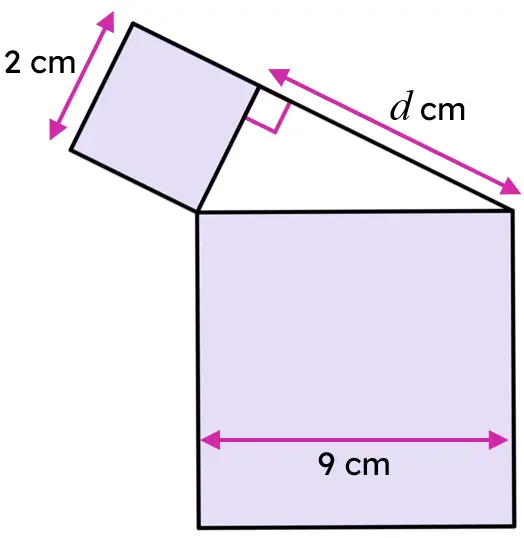
Q4.The length of the side $$x$$ cm is cm, rounded to 2 decimal places.
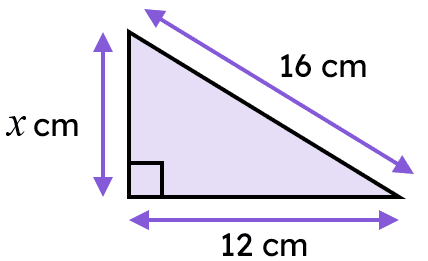
Q5.A right-angled triangle has a hypotenuse of 130 cm. The length of one of its shorter sides is 66 cm. Using Pythagoras' theorem, the perimeter of this triangle is cm.
Q6.Calculate the area of this right-angled triangle.
